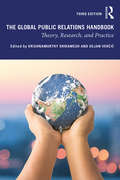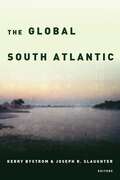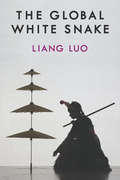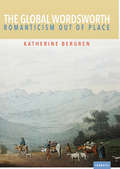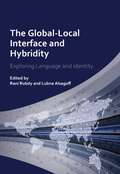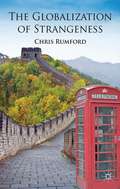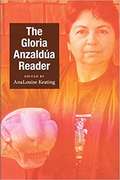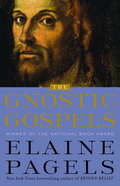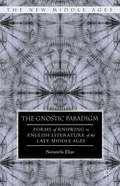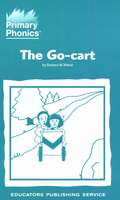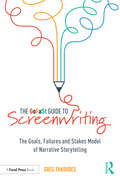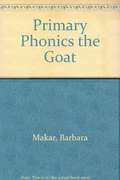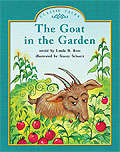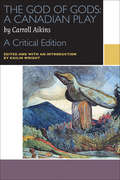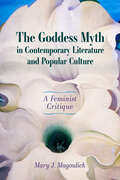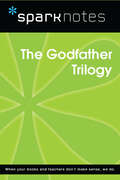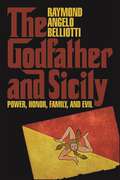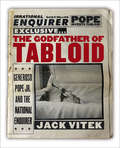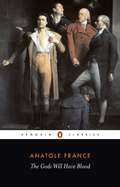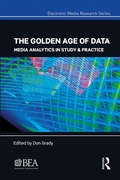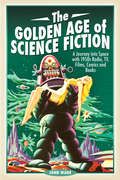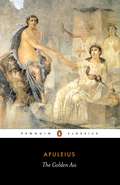- Table View
- List View
The Global Public Relations Handbook: Theory, Research, and Practice
by Dejan Vercic Krishnamurthy SrirameshIn this third edition, The Global Public Relations Handbook: Theory, Research, and Practice offers state-of-the-art discussions of the global public relations industry, blending research-based theory with practice, and presented in essays from both academics and practitioners. This edition's 28 essays in three sections take into account changes in the global communication landscape especially in the last ten years. The first section contains essays that provide conceptual linkages between public relations and international political systems, economic systems and levels of development, societal culture, different media systems including digital media, and activism. Essays in the second section discuss the communication of various global actors such as corporations (including family-owned enterprises), non-profits, governments (and public sector enterprises), global public relations agencies, IGOs such as the European Union and NATO and "informal" organizations such as hactivist groups, terrorists, and failed states. The third section discusses key global communication issues such as climate change, character assassination as a communication tool, internal communication, risk and crisis communication, public affairs, and public diplomacy. This will be an essential resource for students and researchers of public relations, strategic communication, and international communication.
The Global Remapping of American Literature
by Paul GilesThis book charts how the cartographies of American literature as an institutional category have varied radically across different times and places. Arguing that American literature was consolidated as a distinctively nationalist entity only in the wake of the U.S. Civil War, Paul Giles identifies this formation as extending until the beginning of the Reagan presidency in 1981. He contrasts this with the more amorphous boundaries of American culture in the eighteenth century, and with ways in which conditions of globalization at the turn of the twenty-first century have reconfigured the parameters of the subject. In light of these fluctuating conceptions of space, Giles suggests new ways of understanding the shifting territory of American literary history. ranging from Cotton Mather to David Foster Wallace, and from Henry Wadsworth Longfellow to Zora Neale Hurston. Giles considers why European medievalism and Native American prehistory were crucial to classic nineteenth-century authors such as Emerson, Hawthorne, and Melville. He discusses how twentieth-century technological innovations, such as air travel, affected representations of the national domain in the texts of F. Scott Fitzgerald and Gertrude Stein. And he analyzes how regional projections of the South and the Pacific Northwest helped to shape the work of writers such as William Gilmore Simms, José Martí, Elizabeth Bishop, and William Gibson. Bringing together literary analysis, political history, and cultural geography, The Global Remapping of American Literature reorients the subject for the transnational era.
The Global South Atlantic
by Kerry Bystrom and Joseph R. SlaughterNot only were more African slaves transported to South America than to North, but overlapping imperialisms and shared resistance to them have linked Africa, Latin America, and the Caribbean for over five centuries. Yet despite the rise in transatlantic, oceanic, hemispheric, and regional studies, and even the growing interest in South-South connections, the South Atlantic has not yet emerged as a site that captures the attention it deserves.The Global South Atlantic traces literary exchanges and interlaced networks of communication and investment—financial, political, socio-cultural, libidinal—across and around the southern ocean. Bringing together scholars working in a range of languages, from Spanish to Arabic, the book shows the range of ways people, governments, political movements, social imaginaries, cultural artefacts, goods, and markets cross the South Atlantic, or sometimes fail to cross.As a region made up of multiple intersecting regions, and as a vision made up of complementary and competing visions, the South Atlantic can only be understood comparatively. Exploring the Atlantic as an effect of structures of power and knowledge that issue from the Global South as much as from Europe and North America, The Global South Atlantic helps to rebalance global literary studies by making visible a multi-textured South Atlantic system that is neither singular nor stable.
The Global White Snake (China Understandings Today)
by Liang LuoThe Global White Snake examines the Chinese White Snake legends and their extensive, multidirectional travels within Asia and across the globe. Such travels across linguistic and cultural boundaries have generated distinctive traditions as the White Snake has been reinvented in the Chinese, Japanese, Korean, and English-speaking worlds, among others. Moreover, the inter-Asian voyages and global circulations of the White Snake legends have enabled them to become repositories of diverse and complex meanings for a great number of people, serving as reservoirs for polyphonic expressions ranging from the attempts to consolidate authoritarian power to the celebrations of minority rights and activism. The Global White Snake uncovers how the White Snake legend often acts as an unsettling narrative of radical tolerance for hybrid sexualities, loving across traditional boundaries, subverting authority, and valuing the strange and the uncanny. A timely mediation and reflection on our contemporary moment of continued struggle for minority rights and social justice, The Global White Snake revives the radical anti-authoritarian spirit slithering under the tales of monsters and demons, love and lust, and reminds us of the power of the fantastic and the fabulous in inspiring and empowering personal and social transformations.
The Global Wordsworth: Romanticism Out of Place (Transits: Literature, Thought & Culture 1650-1850)
by Katherine BergrenThe Global Wordsworth charts the travels of William Wordsworth’s poetry around the English-speaking world. But, as Katherine Bergren shows, Wordsworth’s afterlives reveal more than his influence on other writers; his appearances in novels and essays from the antebellum U.S. to post-Apartheid South Africa change how we understand a poet we think we know. Bergren analyzes writers like Jamaica Kincaid, J. M. Coetzee, and Lydia Maria Child who plant Wordsworth in their own writing and bring him to life in places and times far from his own—and then record what happens. By working beyond narratives of British influence, Bergren highlights a more complex dynamic of international response, in which later writers engage Wordsworth in conversations about slavery and gardening, education and daffodils, landscapes and national belonging. His global reception—critical, appreciative, and ambivalent—inspires us to see that Wordsworth was concerned not just with local, English landscapes and people, but also with their changing place in a rapidly globalizing world. This study demonstrates that Wordsworth is not tangential but rather crucial to our understanding of Global Romanticism. Published by Bucknell University Press. Distributed worldwide by Rutgers University Press.
The Global-Local Interface and Hybridity
by Lubna Alsagoff Rani RubdyThe chapters in this volume seek to bring hybrid language practices to the center of discussions about English as a global language. They demonstrate how local linguistic resources and practices are involved in the refashioning of identities in a variety of cross-cultural and geographical contexts, and illustrate hybridity as an enactment of resistance and creativity. Drawing on a variety of disciplines and ideological perspectives, the authors use contexts as diverse as social media, Bollywood films, workplaces and kindergartens to explore the ways in which English has become a part of localities and social relations in ways that are of significant sociolinguistic interest in understanding the dynamics of mobile cultures and transcultural flows.
The Globalization of Strangeness
by Chris RumfordThe figure of the stranger is in serious need of revision, as is our understanding of the society against which the stranger is projected. Under conditions of globalization, inside/outside markers have been eroded and conventional indicators of 'we-ness' are no longer reliable. We now live in a generalized state of strangeness, one consequence of globalization: we no longer know where our community ends and another one begins. In such circumstances it is often the case that neighbours are the nearest strangers. Strangeness occurs when global consciousness outstrips global connectivity and this means that we need to rethink some core elements of globalization theory. Under conditions of strangeness the stranger is a 'here today, gone tomorrow' figure. This book identifies the cosmopolitan stranger as the most significant contemporary figure of the stranger, one adept at negotiating the 'confined spaces' of globalization in order to promote new forms of social solidarity and connect with distant others.
The Gloria Anzaldúa Reader (Latin America Otherwise)
by Gloria Anzaldúa AnaLouise KeatingBorn in the Río Grande Valley of south Texas, independent scholar and creative writer Gloria Anzaldúa was an internationally acclaimed cultural theorist. As the author of Borderlands / La Frontera: The New Mestiza, Anzaldúa played a major role in shaping contemporary Chicano/a and lesbian/queer theories and identities. As an editor of three anthologies, including the groundbreaking This Bridge Called My Back: Writings by Radical Women of Color, she played an equally vital role in developing an inclusionary, multicultural feminist movement. A versatile author, Anzaldúa published poetry, theoretical essays, short stories, autobiographical narratives, interviews, and children’s books. Her work, which has been included in more than 100 anthologies to date, has helped to transform academic fields including American, Chicano/a, composition, ethnic, literary, and women’s studies. This reader—which provides a representative sample of the poetry, prose, fiction, and experimental autobiographical writing that Anzaldúa produced during her thirty-year career—demonstrates the breadth and philosophical depth of her work. While the reader contains much of Anzaldúa’s published writing (including several pieces now out of print), more than half the material has never before been published. This newly available work offers fresh insights into crucial aspects of Anzaldúa’s life and career, including her upbringing, education, teaching experiences, writing practice and aesthetics, lifelong health struggles, and interest in visual art, as well as her theories of disability, multiculturalism, pedagogy, and spiritual activism. The pieces are arranged chronologically; each one is preceded by a brief introduction. The collection includes a glossary of Anzaldúa’s key terms and concepts, a timeline of her life, primary and secondary bibliographies, and a detailed index.
The Glossy Years: Magazines, Museums and Selective Memoirs
by Nicholas Coleridge'The most entertaining book of the year' Sunday Times _____________________________________________________Diana touched your elbow, your arm, covered your hand with hers. It was alluring. And she was disarmingly confiding."Can I ask you something? Nicholas, please be frank..."Over his thirty-year career at Condé Nast, Nicholas Coleridge has witnessed it all. From the anxieties of the Princess of Wales to the blazing fury of Mohamed Al-Fayed, his story is also the story of the people who populate the glamorous world of glossy magazines. With relish and astonishing candour, he offers the inside scoop on Tina Brown and Anna Wintour, David Bowie and Philip Green, Kate Moss and Beyonce; on Margaret Thatcher's clothes legacy, and a surreal weekend away with Bob Geldof and William Hague. Cara Delevingne, media tycoons, Prime Ministers, Princes, Mayors and Maharajas - all cross his path.His career in magazines straddles the glossies throughout their glorious zenith - from the 1970s, 1980s and 1990s to the digital iterations of the 21st century. Having cut his teeth on Tatler, and as Editor-in-Chief of Harpers & Queen, he became the Mr Big of glossy publishing for three decades.Packed with surprising and often hilarious anecdotes, The Glossy Years also provides perceptive insight into the changing and treacherous worlds of fashion, journalism, museums and a whole sweep of British society. This is a rich, honest, witty and very personal memoir of a life splendidly lived.__________________________________________________________'An entertaining whirlwind' Evening Standard'Gentle, jolly . . . Blissfully funny' Sunday Telegraph'An irresistible read, hilarious, honest and insightful. I adored it' Tina Brown'Sparkling' Spectator'Forthright, witty and gossipy . . . a passion for glossy magazines shines through this effervescent memoir' Sunday Express
The Gnostic Gospels: Heracleon's Commentary On John (Modern Library 100 Best Nonfiction Books)
by Elaine PagelsDiscussion of early church writings discovered in 1945, and of how Christianity evolved.<P><P> Winner of the National Book Award
The Gnostic Paradigm
by Natanela EliasBy the later fourteenth century, it has been assumed that Gnosticism and its influences dispersed almost completely. While the late-medieval church was vigorous in its efforts to teach orthodoxy to the laity, Natanela Elias reveals here that gnosticism actually simmered below the surface in a number of late-medieval texts. The first of its kind, this study examines this spiritual undercurrent in late medieval English literary works and sheds new light.
The GoFaSt Guide To Screenwriting: The Goals, Failures, and Stakes Model of Narrative Storytelling
by Greg TakoudesCreator of the GoFaSt Model, author Greg Takoudes introduces a comprehensive study of the structural models of screenwriting and provides readers with an adaptive framework for writing successful scripts. With a new approach which reframes discussions and offers alternatives to students and writers who find conventional models creatively constricting, Takoudes draws from both teaching and professional experience to provide a new model of screenwriting that is designed to be adaptive to various types of scripts. The book is structured in three parts. First, it introduces the GoFast Model – allowing for less orthodox writers to keep their unique voices by breaking scripts down into smaller parts and encouraging more flexibility to write in an organized way, without feeling stifled. Second, the book explores several writing scenarios – featuring the practical uses of the model and a step-by-step script structure spanning chapters on a horror, superhero, and heist movie. Third, it concludes with detailed case studies exploring how the GoFaSt Model can be applied to break down scripts including Get Out, The Marvelous Mrs Maisel, and Portrait of a Lady on Fire. It is an ideal text for screenwriting students and aspiring screenwriters interested in learning how working writers put structural models into practice, as well professional screenwriters, producers, and development executives looking for new ways to think about writing, feedback, and development.
The Goat in the Garden (Fountas & Pinnell LLI Green #Level G, Lesson 77)
by Linda RossFountas and Pinnell Leveled Literacy Intervention Green System -- 1st Grade
The God of Gods: A Critical Edition (Canadian Literature Collection)
by Carroll AikinsCarroll Aikins’s play The God of Gods (1919) has been out of print since its first and only edition in 1927. This critical edition not only revives the work for readers and scholars alike, it also provides historical context for Aikins’s often overlooked contributions to theatre in the 1920s and presents research on the different staging techniques in the play’s productions. Much of the play’s historical significance lies in Aikins’s vital role in Canadian theatre, as director of the Home Theatre in British Columbia (1920–22) and artistic director of Toronto’s Hart House Theatre (1927–29). Wright reveals The God of Gods as a modernist Canadian work with overt influences from European and American modernisms. Aikins’s work has been compared to European modernists Gordon Craig, Adolphe Appia, and Jacques Copeau. Importantly, he was also intimately connected with modernist Canadian artists and the Group of Seven (who painted the scenery for Hart House Theatre). The God of Gods contributes to current studies of theatrical modernism by exposing the primitivist aesthetics and theosophical beliefs promoted by some of Canada’s art circles at the turn of the twentieth century. Whereas Aikins is clearly progressive in his political critique of materialism and organized religion, he presents a conservative dramatization of the noble savage as hero. The critical introduction examines how The God of Gods engages with Nietzschean and theosophical philosophies in order to dramatize an Aboriginal lover-artist figure that critiques religious idols, materialism, and violence. Ultimately, The God of Gods offers a look into how English and Canadian theatre audiences responded to primitivism, theatrical modernism, and theosophical tenets during the 1920s.
The Goddess Myth in Contemporary Literature and Popular Culture: A Feminist Critique
by Mary J. MagoulickHonorable Mention for the 2022 Elli Köngäs-Maranda Prize awarded by the Women's Section of the American Folklore SocietyGoddess characters are revered as feminist heroes in the popular media of many cultures. However, these goddess characters often prove to be less promising and more regressive than most people initially perceive. Goddesses in film, television, and fiction project worldviews and messages that reflect mostly patriarchal culture (included essentialized gender assumptions), in contrast to the feminist, empowering levels many fans and critics observe. Building on critiques of other skeptical scholars, this feminist, folkloristic approach deepens how our remythologizing of the ancient past reflects a contemporary worldview and rhetoric. Structures of contemporary goddess myths often fit typical extremes as either vilified, destructive, dark, and chaotic (typical in film or television); or romanticized, positive, even utopian (typical in women’s speculative fiction). This goddess spectrum persistently essentializes gender, stereotyping women as emotional, intuitive, sexual, motherly beings (good or bad), precluded from complex potential and fuller natures. Within apparent good-over-evil, pop-culture narrative frames, these goddesses all suffer significantly. However, a few recent intersectional writers, like N. K. Jemisin, break through these dark reflections of contemporary power dynamics to offer complex characters who evince “hopepunk.” They resist typical simplified, reductionist absolutes to offer messages that resonate with potential for today’s world. Mythic narratives featuring goddesses often do, but need not, serve merely as ideological mirrors of our culture’s still problematically reductionist approach to women and all humanity.
The Godfather Trilogy (SparkNotes Film Guide)
by SparkNotesThe Godfather Trilogy (SparkNotes Film Guide) Making the reading experience fun! SparkNotes Film Guides are one-stop guides to great works of film–masterpieces that are the foundations of filmmaking and film studies. Inside each guide you&’ll find thorough, insightful overviews of films from a variety of genres, styles, and time periods. Each film guide contains:Information about the director and the context in which the film was made Thoughtful analysis of major characters Details about themes, motifs, and symbols Explanations of the most important lines of dialogue In-depth discussions about what makes a film so remarkable SparkNotes Film Guides are an invaluable resource for students or anyone who wants to gain a deeper understanding of the great films they know and love.
The Godfather and Sicily: Power, Honor, Family, and Evil (SUNY series in Italian/American Culture)
by Raymond Angelo BelliottiIn this interdisciplinary work, Raymond Angelo Belliotti presents an interpretation of The Godfather as, among other things, a commentary on the transformation of personal identity within the Sicilian and Italian immigrant experience. The book explores both the novel and the film sequence in terms of an existential conflict between two sets of values that offer competing visions of the world: on the one hand, a nineteenth-century Sicilian perspective grounded in honor and the accumulation of power within a culturally specific family order; and on the other, a twentieth-century American perspective that celebrates individualism and commercial success. Analyzing concepts such as honor, power, will to power, respect, atonement, repentance, forgiveness, and a meaningful life, Belliotti applies these analyses to the cultural understandings transported to America by nineteenth-century Italian immigrants, casting fresh light on Old World allegiances to l'ordine della famiglia (the family order), la via vecchia (the old way), and the patriarchal ideal of uomo di pazienza (the man of patience), as well as the Sicilian code of honor. The two sets of values—Old World Sicilian and twentieth-century American—coalesce uneasily in the same cultural setting, and their conflict is irresolvable.
The Godfather of Tabloid: Generoso Pope Jr. and the National Enquirer
by Jack Vitek“An original American story of a tough, embattled media player with uncanny gifts for giving the public what they want.” —Publishers WeeklyIn The Godfather of Tabloid, Jack Vitek explores the life and remarkable career of Generoso Pope Jr. and the founding of the most famous tabloid of all—the National Enquirer. Upon graduating from MIT, Pope worked briefly for the CIA until he purchased the New York Enquirer with dubious financial help from mob boss Frank Costello. Working tirelessly and cultivating a mix of American journalists (some of whom, surprisingly, were Pulitzer Prize winners) and buccaneering Brits from Fleet Street who would do anything to get a story, Pope changed the name, format, and content of the modest weekly newspaper until it resembled nothing America had ever seen before.Pope was a man of contradictions: he would fire someone for merely disagreeing with him in a meeting (once firing an editor in the middle of his birthday party), and yet he spent upwards of a million dollars a year to bring the world’s tallest Christmas tree to the Enquirer offices in Lantana, Florida, for the enjoyment of the local citizens. Driven, tyrannical, and ruthless in his pursuit of creating an empire, Pope changed the look and content of supermarket tabloid media, and the industry still bears his stamp. Grounded in interviews with many of Pope’s supporters, detractors, and associates, The Godfather of Tabloid is the first comprehensive biography of the man who created a genre and changed the world of publishing forever.“An engaging saga of one man’s obsessive devotion to creating an entertaining alternative universe.” —The Wall Street Journal
The Gods Will Have Blood: (Les Dieux Ont Soif)
by Anatole France Frederick DaviesIt is April 1793 and the final power struggle of the French Revolution is taking hold: the aristocrats are dead and the poor are fighting for bread in the streets. In a Paris swept by fear and hunger lives Gamelin, a revolutionary young artist appointed magistrate, and given the power of life and death over the citizens of France. But his intense idealism and unbridled single-mindedness drive him inexorably towards catastrophe. Published in 1912, The Gods Will Have Blood is a breathtaking story of the dangers of fanaticism, while its depiction of the violence and devastation of the Reign of Terror is strangely prophetic of the sweeping political changes in Russia and across Europe.
The Gold Standard and the Logic of Naturalism: American Literature at the Turn of the Century
by Walter Benn MichaelsThe Gold Standard and the Logic of Naturalism discusses ways of creating value in turn-of-the-century American capitalism. Focusing on such topics as the alienation of property, the invention of masochism, and the battle over free silver, it examines the participation of cultural forms in these phenomena. It imagines a literary history that must at the same time be social, economic, and legal; and it imagines a literature that, to be understood at all, must be understood both as a producer and a product of market capitalism.
The Golden Age of Data: Media Analytics in Study & Practice (Electronic Media Research Series)
by Don GradyAudience and media analytics is more important now than ever, and this latest volume in the cutting-edge BEA Electronic Media Research Series collects some of the top scholars working with big data and analytics today. These chapters describe the development and help define media analytics as an academic discipline and professional practice. Understanding audiences is integral to creating and distributing media messages and the study of media analytics requires knowing a range of skills including research methods, the necessary tools available, familiarity with statistical procedures, and a mindset to provide insights and apply findings. This book summarizes the insights of analytics practitioners regarding the current state of legacy media analysis and social media analytics. Topics covered include the evolution of media technologies, the teaching of media measurement and analytics, the transition taking place in media research, and the use of media analytics to answer meaningful questions, drive content creation, and engage with audiences.
The Golden Age of Science Fiction: A Journey into Space with 1950s Radio, TV, Films, Comics and Books
by John WadeA detailed look at the British world of science fiction in the 1950s. John Wade grew up in the 1950s, a decade that has since been dubbed the &“golden age of science fiction.&” It was a wonderful decade for the genre, but not so great for young fans. With early television broadcasts being advertised for the first time as &“unsuitable for children&” and the inescapable barrier of the &“X&” certificate in the cinema barring anyone under the age of sixteen, the author had only the radio to fall back on—and that turned out to be more fertile for the budding SF fan than might otherwise have been thought. Which is probably why, as he grew older, rediscovering those old TV broadcasts and films that had been out of bounds when he was a kid took on a lure that soon became an obsession. For him, the super-accuracy and amazing technical quality of today&’s science fiction films pale into insignificance beside the radio, early TV and B-picture films about people who built rockets in their back gardens and flew them to lost planets, or tales of aliens who wanted to take over, if not our entire world, then at least our bodies. This book is a personal account of John Wade&’s fascination with the genre across all the entertainment media in which it appeared—the sort of stuff he reveled in as a young boy—and still enjoys today. &“Not only a well–researched book grounded in hundreds of sources, but also an unmistakable labor of love.&” —New York Journal of Books
The Golden Ass
by ApuleiusWritten towards the end of the second century AD, The Golden Ass tells the story of the many adventures of a young man whose fascination with witchcraft leads him to be transformed into a donkey. The bewitched Lucius passes from owner to owner - encountering a desperate gang of robbers and being forced to perform lewd 'human' tricks on stage - until the Goddess Isis finally breaks the spell and Lucius is initiated into her cult. Apuleius' enchanting story has inspired generations of writers such as Boccaccio, Shakespeare, Cervantes and Keats with its dazzling combination of allegory, satire, bawdiness and sheer exuberance, and remains the most continuously and accessibly amusing book to have survived from Classical antiquity.
